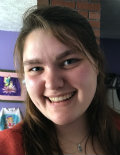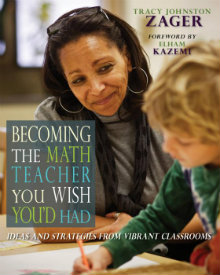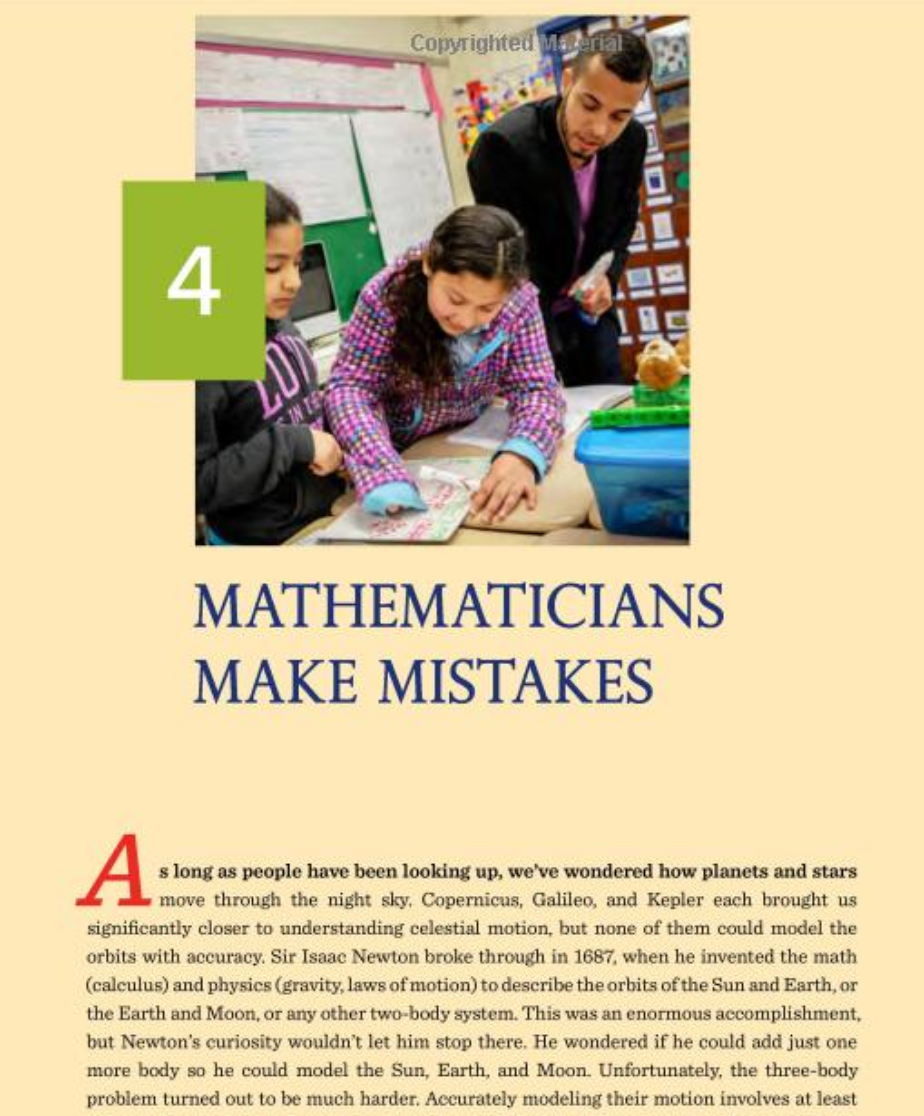Be the Math Teacher You Wish You’d Had
Becoming the Math Teacher You Wish You’d Had: Ideas and Strategies from Vibrant Classrooms
By Tracy Johnston Zager
(Stenhouse Publishers, 2017 – Learn more)
 Reviewed by Emmy Avery Witham
Reviewed by Emmy Avery Witham
I am not a math person. That side of my brain totally freezes once I enter a math class or have a problem in front of me. I guess I haven’t had good luck when it comes to figuring out why x and y are in the same problems as numbers. But this might just be because I haven’t had a successful math class yet. As a pre-service teacher preparing for a career that might include teaching math in a self-contained classroom, I actually felt hopeful again after reading Becoming the Math Teacher You Wish You’d Had and encouraged to learn math from the strategies Tracy Johnston Zager enthused about.
What I found inside
 Zager opens the book with a personal story about how her mother used to become stressed and drew blanks whenever a math problem would come up. Similarly, that’s how I feel. But she goes on to say how incredibly skillful her mother was in math, just not in the traditional way. Rather she was adept with money and in measuring for everyday use.
Zager opens the book with a personal story about how her mother used to become stressed and drew blanks whenever a math problem would come up. Similarly, that’s how I feel. But she goes on to say how incredibly skillful her mother was in math, just not in the traditional way. Rather she was adept with money and in measuring for everyday use.
The author understands how math should be more than just classrooms where the students knock out problem after problem with no real connection or value to the effort. That is how math has become a negative subject and why non-mathematically excited people freeze once someone even mentions the word math.
Zager offers solutions to help with the anxiety that so many of us feel, while telling engaging stories from real classrooms to help us visualize students in action.
Making connections for our learners
In order to improve the situation in math class, Zager believes we must ask the question, “What is Math?” This might be a simple question, one that could be answered by a formal definition. However, that won’t help us when it comes to teaching math to a classroom full of students who have the mindset of “math is hard and I won’t ever use it!”
Throughout many helpful chapters, Zager explains how math must be taught with connections to instances where the students will encounter such a need for math that they are ready to make it their own – becoming risk-takers and asking questions rather than supplying answers.
Wouldn’t math class have been a lot more fun if there had been a lesson on how math can be applied to the “real world” by bringing in people with different careers and having them explain what kind of math they do in their job? I would have been much more engaged with doing the work if I had known math had a purpose outside the walls of the classroom. Zager explains this concept well in a chapter on making connections, as she tells stories about different teachers who have used this strategy effectively in their classrooms.
As I read the book, I noticed that each time Zager stated her claim for a chapter, she always followed up by providing vivid examples with real conversations that different students have had in trying to understand the value of math. These conversations help articulate and give life to otherwise complex statements and provide us with real examples of what collaboration looks like in each instance.
Many of the figures in this book are actual pictures of student work and photos of lessons. These accent the conversations and examples well, engaging the readers and helping them understand what is being said.
The book is also very easy to follow with big headings on each concept and common questions that many teachers might ask. Each chapter is titled “Mathematicians…” to imply that any student of math is a mathematician and should be called such.
What’s most important to me
I hope to someday be an elementary school teacher who is ready and willing to teach math. Becoming the Math Teacher You Wish You’d Had offers me a sense of hope that I am capable of teaching a more fun and engaging math class for every student.
Math concepts can be hard for me to absorb when I’m learning them, not to mention trying to teach them to someone else. After reading this book, though, I have found a sense of confidence and security that I can teach this rigorous subject, and I can teach it using these inspiring strategies.
My goal for my students is to help them gain full ownership of mathematical learning. Using strategies like discussing the theories in math and coming up with questions (rather than just providing answers), as Tracy Johnston Zager writes about in Becoming the Math Teach You Wish You’d Had, makes it more likely I will succeed.
Emmy Avery Witham is a student at College of the Atlantic in Bar Harbor, ME and is studying to be a certified teacher. She has been working with kids since she was twelve as a child care provider. Since then, she has volunteered in schools and worked in a summer camp, with ages ranging from five to ten years old.

































